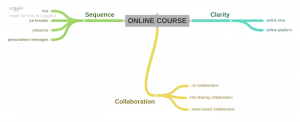Throughout the past four topics, I have journeyed from personal digital identity to online community in the context of education. As I was journeying from one topic to another, a few questions came to mind and now I have a chance to formulate them. I particularly put a lot of thoughts on these questions:
Does one need to have a good digital presence before participating in online learning communities? For instance, do I need to have a good digital identity (Beetham & Sharpe, 2010) before joining an online community? Must I first know how to twitter, blog, do online sketch and so on? Is having an email account not sufficient?
The background to those questions is that there are a lot of online tools available and a lot more are sprouting soon. Our students will use tools that we have not even heard today. The effort of mastering these soon-to-be-available tools is significant. First, one needs to be aware of these tools (which, again, may not even exist now). Two, one then needs to learn how to use them. Third, one then needs to design how to use these tools in the context of learning. Instructors must strategise.
After looking at various frameworks like the 5-stage model (Salmon, n.d.) and the Community of Inquiry (Garrison, Anderson, & Archer, 2000; Rienties & Rivers, 2014), I analogise* tools to online learning as languages are to communication. Knowing more tools are certainly more beneficial than knowing fewer tools; just as knowing more languages will make one better in outreaching to more listeners. However, a language is not the same as communication; the ability to speak many languages is not an indication of the ability to communicate. Likewise, the ability to use many online tools does not necessarily indicate good design of online learning. It is imperative to know at least a tool to design a meaningful online learning, but it is more imperative to apply well-tested frameworks of online learning to really help students to have a meaningful online learning experience.
As I shared in my Topic 4 Blog, I plan to make a conscious effort to scaffold the Emotional Presence of students in my modules, especially now that online avenues are used very extensively. This is one “presence” that I just came to know through ONL and has a lot of potential for improvement. The other “presence” that I plan to help my students is the Social Presence by addressing the long-standing issue of participation asymmetry (Capdeferro & Romero, 2012).
I think these are two steps that I can try out soon and hope to measure its impact.
*I shared this analogy in one of PBL10 group meetings. Thanks to my group mates for their inspiration.
References:
Beetham, & Sharpe. (2010). Retrieved from http://web.archive.org/web/20141011224212/http:/jiscdesignstudio.pbworks.com/w/page/46740204/Digital%20literacy%20framework
Salmon, G. (n.d.). Retrieved from https://www.gillysalmon.com/five-stage-model.html
Garrison, D., Anderson, T., & Archer, W. (2000). Critical Inquiry in a Text-based Environment: Computer Conferencing in Higher Education. The Internet and Higher Education, 88.
Rienties, B., & Rivers, B. (2014). Measuring and Understanding Learner Emotions: Evidence and Prospects. Learning Analytics Community Exchange.
Capdeferro, N., & Romero, N. (2012). Are Online Learners Frustrated with Collaborative Learning Experiences? International Review of Research in Open and Distance Learning, 13(2), 26-44.

